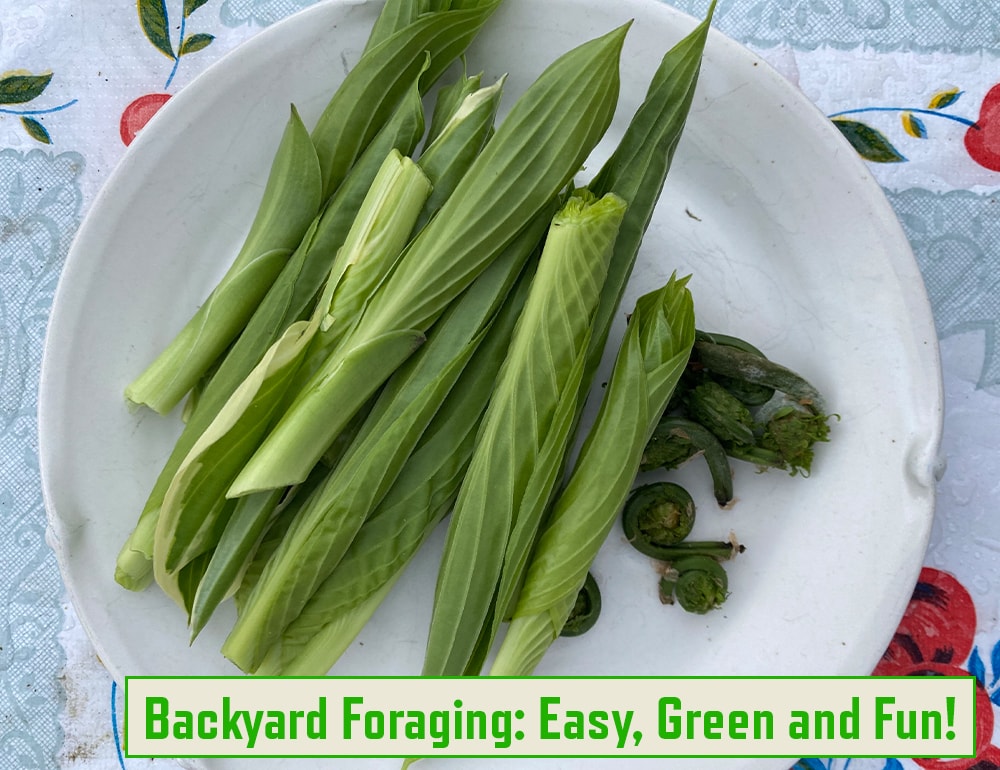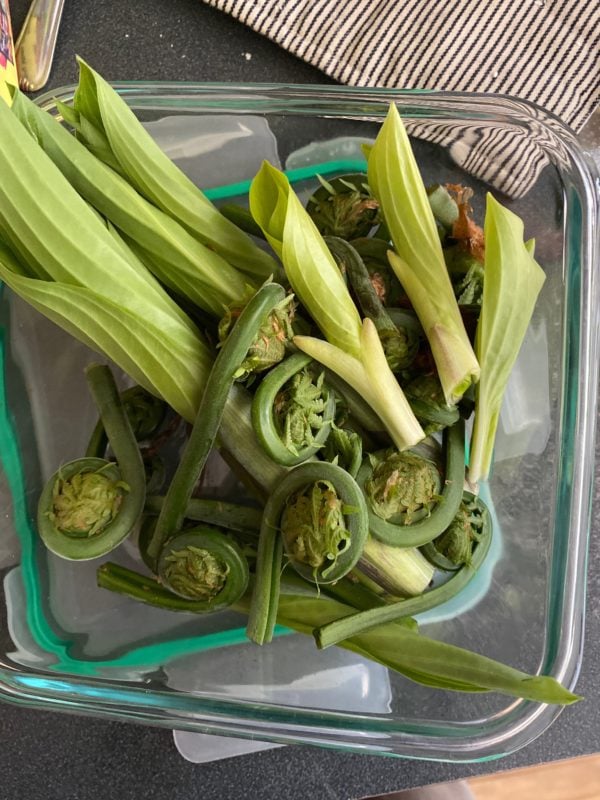
Backyard Foraging: Easy, Green and Fun!
Anna Tsantir, Founder Lady, Two Bettys Green Cleaning
July 2, 2021
You might know me as the leader of Two Bettys, a company that’s wild about cleanin’ and greenin’. But in the summer, I geek out about something else that’s clean and green: foraging. My family and I love hunting for tasty, healthy food in our backyard and around Minneapolis. You can do it too!
Why forage?
- To eat delicious things that might not be available at the grocery store
- To reduce the immense carbon footprint of shipping food from far away
- To connect with the local plant population and the seasons
- To expand your understanding of food justice
- When you pick your dinner instead of buying it, you save money!
Many think of foraging as simply collecting what’s already growing in a space, but it can also include picking things that you plant yourself.
My foraging adventures

A few years back, my family planted elderberry sambucus bushes in our yard. They’re currently yielding a ton of flower clusters, which we’re using to brew up elderflower lemonade (it’s amazing in a gimlet!). Soon, the bushes will give us deep purple elderberries, which we can eat raw, cook into a syrup for sore throats, or make into fruit snacks. When working with elderflower bushes, steer clear of the leaves and twigs/branches–those are NOT edible.
In our yard, there are also strawberries, blueberries, winterberries and chokeberries (aronia berries). We’re in the process of turning our lawn into a no-mow carpet of clovers and low, edible “weeds.” Soon, it will be time to harvest the lawn’s chickweed and lamb’s quarters, which taste great steamed, sautéed or in salads. We’re also big fans of dandelion fritters (if you’ve never tried them, you’re in for a treat!).
It’s not just the adults in my family that are into eating foraged food. My 9-year-old, who got us into foraging in the first, place, loves hosta shoots, and the fiddleheads from our ostrich ferns, both of which are only available in the spring. When we gather these from the yard for dinner, we spend zero dollars and create zero emissions!
How to get started
The cool thing about foraging is that you can begin your own backyard, or one of our amazing Minneapolis parks. If you’re brand new to foraging, here are some tips:
- Read Backyard Foraging by Ellen Zachos. This book is a great intro to the practice of collecting food, with lots of pictures to help you identify what’s edible. Buy Backyard Foraging from our friends at Moon Palace Books!
- Go on a foraging guided tour. Having an expert point out what plants to eat and which to avoid is a great way to get up to speed. There are many tours to choose from–edible greens, medicinal herbs, mushrooms and more. Find a guided tour in Minnesota
- Practice sustainable foraging. Responsible foraging means that when you harvest food, you do it in a way that doesn’t harm the plant, and maybe even makes it healthier in the long run. These best practices include taking the top of the top of a plant and leaving the bottom with the roots, so the plant can regenerate.
See all 6 sustainable harvesting tips from the Sierra Club - Forage safely and respectfully. Personally, I don’t pick food from city boulevards–my own or around town–because the soil quality is poor. Road salt and muck accumulates on boulevards during the winter, then soaks into the soil in the spring. Also, always ask permission before foraging from the edge of someone’s yard or private property.
Once you know the foraging basics and want to take a deeper dive, check out the books of Sam Thayer and the work of Alan Bergo, the Forager Chef. And if all this talk of found food has made you hungry, try this recipe: dandelion greens with a kick.
Happy foraging!